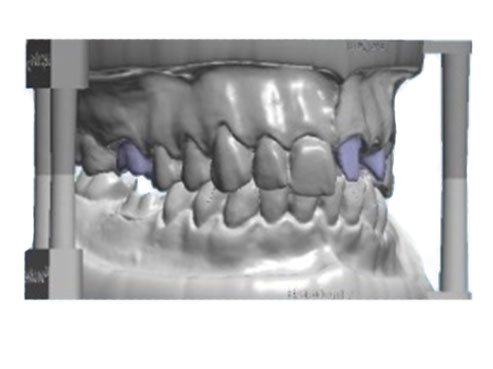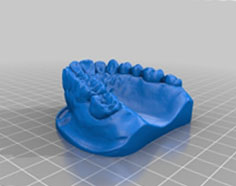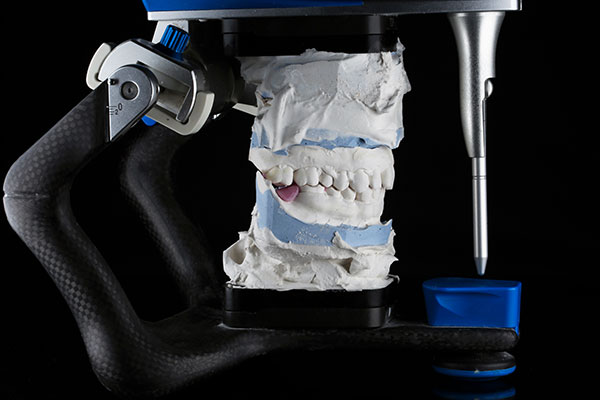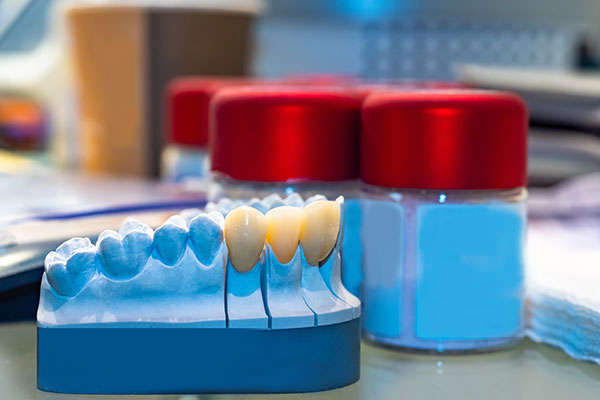
Diagnostic models of teeth are a tool orthodontists utilize in a multitude of different ways:
- To aid in the diagnosis and treatment planning of a case
- To fabricate patient specific appliances such as expanders and retainers.
- To monitor progress from the start of treatment to the final result
- To assist in planning coordinated treatments such as placing implants, making crowns and restorations for teeth, or performing jaw surgery
- To further advancements in the field of tooth movement by making measurements and comparing results of treatment.

Diagnostic models are taken at the beginning and end of treatment. The models can be made either by taking impressions or by scanning the teeth. When impressions are taken in the office, the material used is either an alginate or a more advanced material called a poly vinyl siloxane. The alginate is similar to placing five pieces of bubblegum in your mouth at one time which makes it very easy. How many kids haven’t done that?!l The impressions are then poured up in plaster to make a handheld model of the teeth. The advantage? With models, you can turn them and view the teeth from behind unlike when you look in the mouth. This provides a different view to help diagnose problems.
Scanning teeth can create digital models instead of handheld ones. Digital models can either be created from scanning impressions or poured models or scanning the teeth directly in the mouth. Digitizing teeth is the basis of many of the clear aligner treatments. The treatments are planned with computer generated predictions from scanned diagnostic models. The only drawback with this system is that sometimes the scan may miss an area at which point, the prediction may fill that area in with a “best guess.”

When scanning teeth for a lab, the lab may “pour” the scan and create a 3D printed model to use to make an appliance. Dr. Renick does many of her appliances in house so impressions are usually used to keep it cost effective for the patient by reducing the lab costs.

The models are a good way to track progress in many views. They are essentially snap shots of the bite at different points in time. Generally speaking, we limit them to a before and after, however in the case of surgical intervention, multiple models may be taken. These models help predict the possible surgical outcome and “model surgery” may mimic the actual procedure. Doing this ahead of a planned surgery may earmark areas or teeth that may still need to be moved to create a better environment for a better surgical result.
 These models may also be used to fabricate surgical splints or templates for the jaw for use during the actual surgery.
These models may also be used to fabricate surgical splints or templates for the jaw for use during the actual surgery.In addition to jaw surgery, models can be used for diagnostic wax ups. These are mock ups when planning crowns, veneers, or restorations in complex cases. Orthodontically, wax ups may be used in cases of missing teeth where a “fake tooth” is created in the retainer until a patient is able to proceed with a permanent replacement with their general dentist.
Good treatment doesn’t happen by accident. Without science, advances in treatment can’t happen. Models have classically been used in university settings to further treatment and improve the field of orthodontics to the benefit of our patients.
To learn more about how diagnostic models benefit you and to schedule a consultation with our orthodontist in Sunbury, Ohio, call Renick Orthodontics today at 740-936-5003.

 700 W. Cherry Street, Suite C, Sunbury, OH 43074
700 W. Cherry Street, Suite C, Sunbury, OH 43074 740-936-5003
740-936-5003



